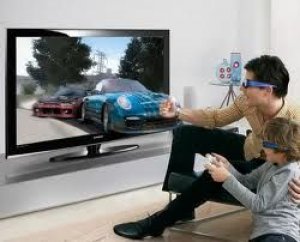
All iLive content is medically reviewed or fact checked to ensure as much factual accuracy as possible.
We have strict sourcing guidelines and only link to reputable media sites, academic research institutions and, whenever possible, medically peer reviewed studies. Note that the numbers in parentheses ([1], [2], etc.) are clickable links to these studies.
If you feel that any of our content is inaccurate, out-of-date, or otherwise questionable, please select it and press Ctrl + Enter.
German scientists develop real-time 3D broadcasts without glasses
Last reviewed: 30.06.2025
 ">
">A new development by German scientists will soon make it possible to watch 3D broadcasts in real time without glasses.
Today, 3D TV owners are content with a limited list of programs, since in order to obtain 3D images, the footage must be additionally processed, which makes it impossible to watch 3D broadcasts in real time.
A glasses-free technology called autostereoscopy is already in use. It is based on the use of lenses or a parallax barrier, so that the left and right eyes see a different number of pixels, creating the illusion of volume. The disadvantage of this method is the high cost and the fixed distance between the viewer and the TV, eye fatigue.
Another method involves simultaneously filming an object with a large number of cameras, which are set up at different angles, causing the images to overlap each other, creating a three-dimensional picture. And the more cameras, the more three-dimensional the picture will be, but this is not practical, notes Frederic Zilli (Fraunhofer Heinrich Hertz Institute).
Scientists have developed a stereoscopic analyzer (STAN) that can process the footage in real time and create the effect of 25 cameras shooting simultaneously. This system is a tablet computer with software installed to convert the signal into stereo format. Unfortunately, the conversion speed is still insufficient for full-fledged 3D broadcasting, but Frederic Zilli claims that this problem will be solved in the near future.
